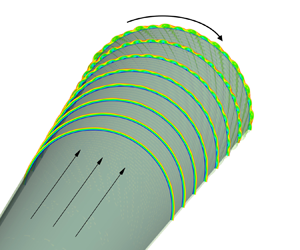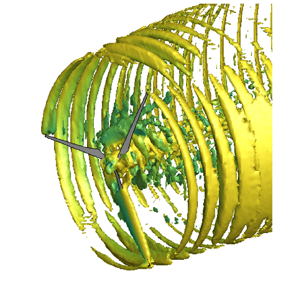Refine listing
Actions for selected content:
1418748 results in Open Access
Gaetano Salvemini and foreign policy during the First World War: the collaboration with The New Europe
-
- Journal:
- Modern Italy / Volume 28 / Issue 4 / November 2023
- Published online by Cambridge University Press:
- 12 September 2023, pp. 286-295
- Print publication:
- November 2023
-
- Article
- Export citation
ATHENA SPITS BLOOD AT ROME, VICTORIA FLEES FROM THE ENEMY: PORTENTA AND IDENTITY IN THE EARLY PRINCIPATE
-
- Journal:
- Greece & Rome / Volume 70 / Issue 2 / October 2023
- Published online by Cambridge University Press:
- 12 September 2023, pp. 175-196
- Print publication:
- October 2023
-
- Article
-
- You have access
- Open access
- HTML
- Export citation
China’s zero-COVID policy and psychological distress: a spatial quasi-experimental design
-
- Journal:
- Journal of Social Policy / Volume 54 / Issue 3 / July 2025
- Published online by Cambridge University Press:
- 12 September 2023, pp. 1029-1046
- Print publication:
- July 2025
-
- Article
-
- You have access
- Open access
- HTML
- Export citation
Selection into maternity leave length and long-run maternal health in Germany
-
- Journal:
- Journal of Social Policy / Volume 54 / Issue 2 / April 2025
- Published online by Cambridge University Press:
- 12 September 2023, pp. 528-547
- Print publication:
- April 2025
-
- Article
-
- You have access
- Open access
- HTML
- Export citation
COVID-19 Impacts on Pennsylvania Coordinated Specialty Care for Early Psychosis Participants
-
- Journal:
- Disaster Medicine and Public Health Preparedness / Volume 17 / 2023
- Published online by Cambridge University Press:
- 12 September 2023, e488
-
- Article
-
- You have access
- Open access
- HTML
- Export citation
THE WISE MAN AND THE SEA: EPICUREANS ON SEA STORMS, SHIPWRECK, AND CHANCE
-
- Journal:
- Greece & Rome / Volume 70 / Issue 2 / October 2023
- Published online by Cambridge University Press:
- 12 September 2023, pp. 238-255
- Print publication:
- October 2023
-
- Article
-
- You have access
- HTML
- Export citation
BYZ volume 47 issue 2 Cover and Back matter
-
- Journal:
- Byzantine and Modern Greek Studies / Volume 47 / Issue 2 / October 2023
- Published online by Cambridge University Press:
- 12 September 2023, pp. b1-b2
- Print publication:
- October 2023
-
- Article
-
- You have access
- Export citation
Narsarsukite in peralkaline granites from the Papanduva Pluton, Graciosa Province, south Brazil: Insights from textural and compositional features
-
- Journal:
- Mineralogical Magazine / Volume 87 / Issue 6 / December 2023
- Published online by Cambridge University Press:
- 12 September 2023, pp. 896-907
-
- Article
- Export citation
Effect of cone rotation on the nonlinear evolution of Mack modes in supersonic boundary layers
-
- Journal:
- Journal of Fluid Mechanics / Volume 971 / 25 September 2023
- Published online by Cambridge University Press:
- 12 September 2023, A4
-
- Article
- Export citation
Introducing CNN-LSTM network adaptations to improve remaining useful life prediction of complex systems
- Part of
-
- Journal:
- The Aeronautical Journal / Volume 127 / Issue 1318 / December 2023
- Published online by Cambridge University Press:
- 12 September 2023, pp. 2143-2153
-
- Article
-
- You have access
- Open access
- HTML
- Export citation
CHRISTIANITY AND CONSTANTINE'S IMPERIAL WOMEN
-
- Journal:
- Greece & Rome / Volume 70 / Issue 2 / October 2023
- Published online by Cambridge University Press:
- 12 September 2023, pp. 218-237
- Print publication:
- October 2023
-
- Article
- Export citation
Latin literature
-
- Journal:
- Greece & Rome / Volume 70 / Issue 2 / October 2023
- Published online by Cambridge University Press:
- 12 September 2023, pp. 313-322
- Print publication:
- October 2023
-
- Article
-
- You have access
- Open access
- HTML
- Export citation
The Deterrent Effect of Whistleblowing on Insider Trading
-
- Journal:
- Journal of Financial and Quantitative Analysis / Volume 59 / Issue 8 / December 2024
- Published online by Cambridge University Press:
- 12 September 2023, pp. 3739-3769
- Print publication:
- December 2024
-
- Article
-
- You have access
- Open access
- Export citation
Roman history
-
- Journal:
- Greece & Rome / Volume 70 / Issue 2 / October 2023
- Published online by Cambridge University Press:
- 12 September 2023, pp. 328-342
- Print publication:
- October 2023
-
- Article
-
- You have access
- Open access
- HTML
- Export citation
GAR series 2 volume 70 issue 2 Cover and Back matter
-
- Journal:
- Greece & Rome / Volume 70 / Issue 2 / October 2023
- Published online by Cambridge University Press:
- 12 September 2023, pp. b1-b7
- Print publication:
- October 2023
-
- Article
-
- You have access
- Export citation
Characterization of energy transfer and triadic interactions of coherent structures in turbulent wakes
-
- Journal:
- Journal of Fluid Mechanics / Volume 971 / 25 September 2023
- Published online by Cambridge University Press:
- 12 September 2023, A7
-
- Article
- Export citation
MF, ZF, and MMSE filters for automotive OFDM radar
-
- Journal:
- International Journal of Microwave and Wireless Technologies / Volume 15 / Issue 10 / December 2023
- Published online by Cambridge University Press:
- 12 September 2023, pp. 1649-1655
-
- Article
- Export citation
Subsidizing Failing Firms: Evidence from Chinese Restaurants
-
- Journal:
- Journal of Financial and Quantitative Analysis / Volume 59 / Issue 8 / December 2024
- Published online by Cambridge University Press:
- 12 September 2023, pp. 3803-3834
- Print publication:
- December 2024
-
- Article
- Export citation
WHY CAN'T TELEMACHUS BE KING? THE GROWTH OF A YOUNG BASILEUS
-
- Journal:
- Greece & Rome / Volume 70 / Issue 2 / October 2023
- Published online by Cambridge University Press:
- 12 September 2023, pp. 289-308
- Print publication:
- October 2023
-
- Article
-
- You have access
- Open access
- HTML
- Export citation
Entry and leaving arcs of turnpikes: their exact computation in the calculus of variations
- Part of
-
- Journal:
- Canadian Mathematical Bulletin / Volume 67 / Issue 1 / March 2024
- Published online by Cambridge University Press:
- 12 September 2023, pp. 227-243
- Print publication:
- March 2024
-
- Article
-
- You have access
- Open access
- HTML
- Export citation











